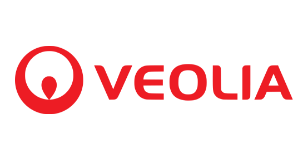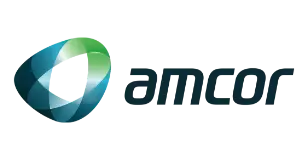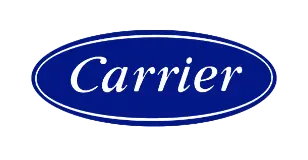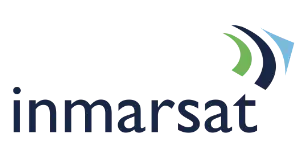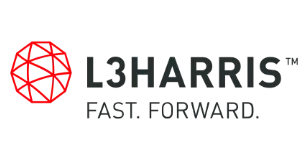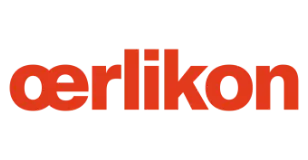
Global Next-Generation Printing Ink Market Research Report: Forecast (2025-2030)
Next-Generation Printing Ink Market - By Ink Type (Aqueous Ink, Solvent-Based Ink, UV-Cured Ink, Eco-Solvent Ink, Latex-Based Ink, Others), By Printing Technology (Inkjet [Continuo...us Inkjet Printing Technology, Drop-on-Demand Inkjet Printing], Laser), By Application (Apparels [Direct-to-Garment, Roll-to-Roll (Fabric)], Publishing and Printing [Signage, Security and Transactional Printing, Others], Packaging [Signage and Display Graphics, Corrugated Packaging, Others], Building and Construction [Ceramic Tiles, Decorative Floors, Others], Cosmetics]) and others Read more
- Chemicals
- Apr 2025
- Pages 212
- Report Format: PDF, Excel, PPT
Market Definition
Next-generation printing inks are new, improved formulae tailored to meet emerging demands arising from modern printing technologies and applications. They incorporate innovative properties and capabilities to improve performance, sustainability, and functionality. Most of the time, these inks have aspects that focus on improved environmental impact, improved quality of print, and the capability to perform special functions that are not feasible with traditional inks.
Market Insights & Analysis: Global Next-Generation Printing Ink Market (2025-30):
The Global Next-Generation Printing Ink Market size is valued at USD 6,457.8 million in 2023 and is projected to reach USD 9,456.5 million By 2030. Along with this, the market is estimated to grow at a CAGR of around 5.6% during the forecast period. With rising demands for high-quality and technologically advanced printing inks in the textile industry, the overall market is growing rapidly. The interest of consumers in trendy and functional textiles has increased, thus bringing an enhanced demand for printing inks with better color absorption and brighter colors.
| Report Coverage | Details |
|---|---|
| Study Period | Historical Data: 2020-23 |
| Base Year: 2024 | |
| Forecast Period: 2025-30 | |
| CAGR (2025-2030) | 5.6% |
| Regions Covered | North America: US, Canada, Mexico |
| Europe: Germany, The UK, France, Italy, Spain, Switzerland, Rest of Europe | |
| Asia-Pacific: China, India, Japan, South Korea, Australia, Rest of Asia-Pacific | |
| South America: Brazil, Rest of South America | |
| Middle East & Africa: The UAE, Saudi Arabia, Qatar, Egypt, South Africa, Rest of MEA | |
| Key Companies Profiled | Mimaki Engineering Co., Ltd., Altana AG, Kornit Digital Ltd., DuPont de Nemours, Inc., Flint Group, DIC Corporation, Huntsman Corporation, Domino Printing Sciences PLC, FUJIFILM Holdings Corporation, Memjet, Sakata Inx Corporation, Roland DG Corporation, Arrow Systems Inc, Toyo Ink Co. Ltd., Epson, Sun Chemical, Others |
| Market Value (2023) | USD 6,457.8 Million |
| Market Value (2030) | USD 9,456.5 Million |
Furthermore, consumer inclination is also gradually shifting towards more personalized and customized textile products, surging the demand for digital textile printing. Special next-generation printing inks with the ability for high-resolution prints, vibrant colors, and excellent wash-fastness are peculiarly suited to serve digital printing technologies such as inkjet printing in the textile sector. Owing to this factor a lot of manufacturers have been launching digital printing inks into the textile industry, providing high-resolution prints onto a wide array of products and colors. For Instance,
- In 2023, DuPont launched its new innovative Artistri digital printing inks called PN 1600 ink series for textile printing.
Thus, it results in the growing demand for next-generation printing inks due to the high quality and digital printing abilities in the textile industry. As the adoption of next-generation printing inks is increasing in the textile sector, the same is creating growing demand on a rapid scale globally, which is helping to boost the growth of the Next-Generation Printing Ink Market.
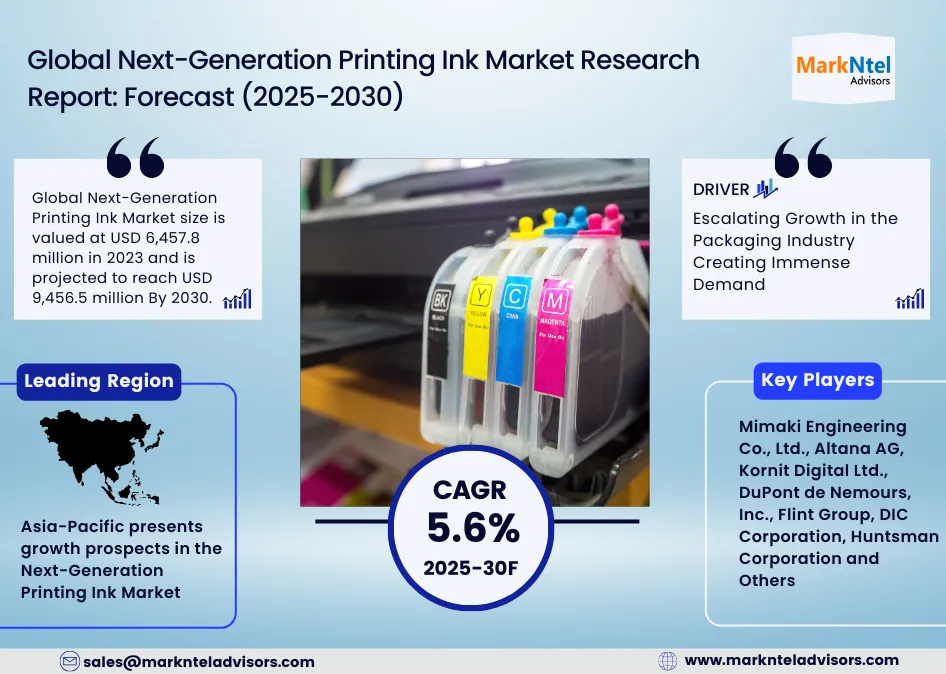
Moreover, steep demand for next-generation printing inks has been witnessed in the building and construction sector. Globally, owing to rapid urbanization, infrastructure development, and the booming real estate sector, construction activities have been rising at a rapid pace. Also, the governments of countries like the USA, Germany, China, India, etc., have been focusing on the construction sector owing to the rising urbanization. For Instance,
- In 2023, the German government provided subsidies of around USD20.67 billion for building renovations and new building construction.
With such construction, demands for high-quality building materials are created, including tiles and interior wallpapers, among others, for the decoration of spaces. Next-generation printing inks are thus increasingly being adopted by manufacturers in a bid to improvise demands for such types of materials through their improved design, durability, and environmental sustainability. Powered by these inks, state-of-the-art digital printing technologies can create complex and customizable designs on tiles and wallpapers which are demanded by the modern consumer in their unique, personalized interior decoration. Thus, increasing integration of next-generation printing inks in the construction sector is poised to be one of the major driving forces for the Global Next-Generation Printing Ink Market.
Global Next-Generation Printing Ink Market Driver:
Escalating Growth in the Packaging Industry Creating Immense Demand for Next-Generation Printing Inks– There has been significant growth in the packaging sector because of changing consumer needs concerning better and more attractive product packaging. Improving disposable incomes coupled with the evolving consumer lifestyle in developing countries drive the growth of the packaging industry through increased demand for high-quality, unique packaging solutions that help differentiate a product at retail. Besides, the growth of the e-commerce industry has added to the demand for packaging solutions across the globe. The increased trend in online shopping creates an enhanced demand for packaging solutions to ensure delivery without any damage to the products. This has resulted in an increased demand for new, attractive, and aesthetically appealing packaging solutions. Since packaging is used widely as a strategic way of advertisement to attract customers, numerous manufacturers & leading players are massively investing in elaborative & unique packing solutions, which are fueling the demand for printing inks.
Moreover, stringent safety standards in the food and beverage industry increase the need for inks safe for direct food contact, and resistant to dampness and temperature changes. Further, the pharmaceutical and cosmetic industry also demands a high dose of anti-counterfeiting; hence, inks possessing exceptional security properties, such as UV visibility and magnetism, are greatly pursued for the authenticity of their products. Thus, with the surging growth in the packaging industry, demand for next-generating printing inks is also growing at a fast pace, augmenting the market growth.
Global Next-Generation Printing Ink Market Opportunity:
Global Push Towards UV and LED Curable Inks to Boost Next-Generation Printing Inks Market Growth – There has been a recent surge in the demand and development of inks with less curing timings and better durability. With the surging demand for printing solutions that can be used for food and beverage packaging, pharmaceuticals, cosmetics, etc., with no reaction and meeting stringent regulations, the demand for UV and LED-cured inks has been rising rapidly. UV and LED Curable Inks have rapid curing time, which significantly enhances production efficiency and reduces turnaround times, making them ideal for high-speed printing applications. Additionally, these inks offer superior durability and resistance to abrasion, chemicals, and environmental factors, ensuring long-lasting prints and making them suitable for various industry verticals. As a result, the demand for UV and LED curable inks has been rising rapidly. To cater to this increasing demand manufacturers have been launching these inks in the market. For Instance,
- In 2023, Fujifilm launched its first indirect food contact ink: CuremaX UV LED IDFC. This dual cure range has been specifically developed for printing on food and pharmaceutical packaging with indirect food contact and has minimal risk of migration.
Thus, with the increasing demand for non-reactive and durable inks with minimum curing times, UV and LED curable inks have been emerging as a major solution. With end users demanding these ink products, the production and adoption are expected to surge in the forecast years which is expected to create opportunities in the Global Next Generation Printing Ink Market.
Global Next-Generation Printing Ink Market Challenge:
Compatibility Issues in Integrating with Existing Printing Systems to Impede Market Growth– Next-Generation Printing Inks often face compatibility issues with the existing printing systems and printers due to their new formulations and characteristics. With innovation in inks toward increased durability, eco-friendliness, or any other sort of special functionalities, most often, they need corresponding modification of the existing printing systems to perform well. This can get complex, very expensive, and time-consuming, and many businesses deter themselves from adopting or investing in adopting new ink technologies. Older printing machines may not be equipped to handle the specific requirements of next-generation inks, such as particular curing methods or substrate interactions. In such a case of incompatibility, the risk of disruption in operation and the cost of equipment upgrade soars.
In addition, large-scale testing and adjustment, are normally required to get the best possible results with new inks, which ultimately slow down the diffusion process and incur extra costs to the end users further hampering its adoption. As a result, many companies have a general liking for sticking with existing, traditionally formulated inks and technologies that further limit the potential for growth of next-generation inks. Thus, the compatibility issues of next-generation inks with existing printing systems add an extra layer of expense in upgrading the machines and systems, which deters the end users from adopting these technologies hampering the growth of the Next-Generation Printing Ink Market.
Global Next-Generation Printing Ink Market Trend:
Shifting Focus Towards Eco-Friendly and Biodegradable Printing Inks Emerging as Prominent Market Trend– The global demand for biodegradable and eco-friendly printing inks is on the increase due to heightened awareness of the environment and strict regulatory standards. Individuals and businesses are looking to find more environmentally friendly alternatives to traditional inks, hazardous, chemically-laden, and highly VOC (Volatile Organic Compounds) rich in content. This has been highly influenced by heightened sensitivity to pollution and the ecological impacts of wastes produced by conventional inks. Biodegradable inks, made from renewable raw materials like soy or algae, are a more sustainable option since they organically break down and reduce landfill waste. In addition, water-based inks, emitting fewer VOCs and less toxicity, are finding broader acceptance as environmentally cleaner solutions. The demand from the packaging industry especially has driven companies to become 'greener' in their products so that customers may be better positioned to enhance their green sustainability brands and meet consumer demand for greener products. Printing ink manufacturers have also been launching eco-friendly printing inks to cater to this surging trend. For Instance,
- In 2023 Flint Group introduced its sustainable Dual Cure ink range specifically designed for food packaging and labelling.
Hence, with the increasing shift towards sustainability and rising demand for eco-friendly products, the demand for biodegradable and eco-friendly printing inks is rising rapidly prompting market growth and emerging as a considerable trend in the Global Next-Generation Printing Ink Market.
Global Next-Generation Printing Ink Market (2025-30): Segmentation Analysis
The Global Next-Generation Printing Ink Market study of MarkNtel Advisors evaluates & highlights the major trends & influencing factors in each segment & includes predictions for the period 2023–2030 at the global levels. Based on the analysis, the market has been further classified as:
Based on Ink Type:
- Aqueous Ink
- Solvent-Based Ink
- UV-Cured Ink
- Eco-Solvent Ink
- Latex-Based Ink
- Others (Invisible Ink, Conductive Ink, Toner, etc.)
Out of them all, the aqueous ink segment holds a considerable market share in the Next-Generation Printing Ink market globally driven by their environment-friendly and versatile nature. Since the inks are water-based, there is a substantial reduction of VOC emissions, which makes them less harmful to the environment when compared with their solvent-based counterparts. Additionally, their lower environmental impact aligns well with the emerging demand for green and eco-friendly printing solutions of today. Besides, aqueous inks yield very fine quality with bright colors and sharp images, allowing applications like packaging, labels, and promotional items to have a good aesthetic contribution. In addition, they give good adhesion to various substrates, including paper and board, adding to their versatility which is driving their significant demand in the paper and printing industry.
Another aspect that adds to their growing appeal is the reduced health and safety risks when compared to other alternatives that are based on solvents. The aqueous printing inks are extensively utilized in the food and pharmacy sectors, thereby surging their demand and adoption in the market globally. Moreover, recent aqueous ink formulations have also dramatically improved their performance regarding drying and durability which has been further surging their adoption, thus driving their growth in the Global Next-Generation Printing Ink Market.
Based on Application:
- By Apparels
- Direct-to-Garment
- Roll-to-Roll (Fabric)
- Publishing and Printing
- Signage
- Security and Transactional Printing
- Others (Books, Magazines, etc.)
- Packaging
- Signage and Display Graphics
- Corrugated Packaging
- Others (Flexible Packaging, Bottles, and Cans, etc.)
- Building and Construction
- Ceramic Tiles
- Decorative Floors (Laminate Flooring)
- Others (Decorative Glass, Wallcoverings, etc.)
- Cosmetics
- Others (Printed Circuit Boards, Automotive, etc.)
Based on application, the publishing and printing segment holds a substantial market share. The rising demand and publication of magazines, books, journals, etc., across the globe is leading to the growth of this segment. The rise of content creation, hyper-personalized publications, and the requirement for high-quality, visually stunning material further augments the segmental growth.
Moreover, areas like packaging and labels are further boosting the growth of the printing and publishing sector as companies look for innovative, creative ways of packaging their products and achieving better brand visibility and levels of customer engagement. With this increasing growth in printing paper, magazines, labels, etc., the demand for next-generation printing ink suiting diverse needs, paper types, etc., has been in great demand which is driving the segment growth in the market globally. Furthermore, the quest for sustainability brings pressure on eco-friendly inks recyclable material processes, and energy efficiency in printing which generates a higher demand for biodegradable prints for the publishing sector augmenting the growth of the printing and publishing sector in the Next Generation Printing Ink Market.
Global Next-Generation Printing Ink Market (2025-30): Regional Projection
Geographically, the Global Next-Generation Printing Ink Market expands across:
- North America
- South America
- Europe
- The Middle East and Africa
- Asia-Pacific
Of them all, Asia-Pacific is anticipated to dominate the market with the largest share during the forecast period. It owes principally to the massive & swiftly expanding packaging industry across the region, especially in countries like China, thereby displaying immense growth potential for the regional market.
Besides, China is seeking the adoption of rigid, flexible, and paper & board packaging materials & making a positive influence on the packaging industry and, in turn, instigating the demand for printing inks. Moreover, the region is also expecting significant expansion of the textile sector, which, in turn, would contribute to the overall market growth. For Instance,
- In 2024, the government of China announced its plan to digitalize 70% of its textile sector in the country. Moreover, the government also released plans to upgrade the overall quality of the mainland textile industry.
China is among the largest producers & exporters of textiles globally, which helps strengthen the region's textile industry & economy. Furthermore, the easy availability of labor & raw materials, hassle-free distribution pipeline, & reduced barriers giving a competitive edge to Asia-Pacific is another crucial aspect driving the Next-Generation Printing Ink Market across the region.
Global Next-Generation Printing Ink Industry Recent Development:
- In 2023: Altana AG acquired the Silberline Group which specializes in developing and manufacturing effect pigments and printing inks to plastics, protective coatings, etc.
- In 2023: Sun Chemical launched its cutting-edge range of digital textile inks called Xennia Amethyst Eco RC ink, ElvaJet Sublimation Inks, etc., at ITMA (International Textile Machinery Association) Asia.
Gain a Competitive Edge with Our Global Next-Generation Printing Ink Market Report
- Global Next-Generation Printing Ink Market Report by MarkNtel Advisors provides a detailed & thorough analysis of market size & share, growth rate, competitive landscape, and key players. This comprehensive analysis helps businesses gain a holistic understanding of the market dynamics & make informed decisions.
- This report also highlights current market trends & future projections, allowing businesses to identify emerging opportunities & potential challenges. By understanding market forecasts, companies can align their strategies & stay ahead of the competition.
- Global Next-Generation Printing Ink Market Report aids in assessing & mitigating risks associated with entering or operating in the market. By understanding market dynamics, regulatory frameworks, and potential challenges, businesses can develop strategies to minimize risks & optimize their operations.
Frequently Asked Questions
- Market Segmentation
- Introduction
- Product Definition
- Research Process
- Assumptions
- Executive Summary
- Global Next-Generation Printing Ink Value Chain Analysis
- Global Next-Generation Printing Ink Market Trends & Insights
- Global Next-Generation Printing Ink Market Dynamics
- Growth Drivers
- Challenges
- Global Next-Generation Printing Ink Market Hotspot & Opportunities
- Global Next-Generation Printing Ink Market Government Regulations and Policies
- Global Next-Generation Printing Ink Market Pricing Analysis
- Global Next-Generation Printing Ink Market Patent Analysis
- Global Next-Generation Printing Ink Market Outlook, 2020-2030F
- Market Size & Analysis
- By Revenues (USD Million)
- By Quantity Sold (Thousand Tons)
- Market Size & Analysis
- By Ink Type
- Aqueous Ink- Market Size & Forecast 2020-2030, Thousand Tons
- Solvent-Based Ink- Market Size & Forecast 2020-2030, Thousand Tons
- UV-Cured Ink- Market Size & Forecast 2020-2030, Thousand Tons
- Eco-Solvent Ink- Market Size & Forecast 2020-2030, Thousand Tons
- Latex-Based Ink- Market Size & Forecast 2020-2030, Thousand Tons
- Others (Invisible Ink, Conductive Ink, Toner, etc.) - Market Size & Forecast 2020-2030, Thousand Tons
- By Printing Technology
- Inkjet- Market Size & Forecast 2020-2030, Thousand Tons
- Continuous Inkjet Printing Technology- Market Size & Forecast 2020-2030, Thousand Tons
- Drop-on-Demand Inkjet Printing- Market Size & Forecast 2020-2030, Thousand Tons
- Laser- Market Size & Forecast 2020-2030, Thousand Tons
- Inkjet- Market Size & Forecast 2020-2030, Thousand Tons
- By Application
- By Apparels- Market Size & Forecast 2020-2030, Thousand Tons
- Direct-to-Garment- Market Size & Forecast 2020-2030, Thousand Tons
- Roll-to-Roll (Fabric) - Market Size & Forecast 2020-2030, Thousand Tons
- Publishing and Printing- Market Size & Forecast 2020-2030, Thousand Tons
- Signage- Market Size & Forecast 2020-2030, Thousand Tons
- Security and Transactional Printing- Market Size & Forecast 2020-2030, Thousand Tons
- Others (Books, Magazines, etc.) - Market Size & Forecast 2020-2030, Thousand Tons
- Packaging- Market Size & Forecast 2020-2030, Thousand Tons
- Signage and Display Graphics- Market Size & Forecast 2020-2030, Thousand Tons
- Corrugated Packaging- Market Size & Forecast 2020-2030, Thousand Tons
- Others (Flexible Packaging, Bottles and Cans, etc.) - Market Size & Forecast 2020-2030, Thousand Tons
- Building and Construction- Market Size & Forecast 2020-2030, Thousand Tons
- Ceramic Tiles- Market Size & Forecast 2020-2030, Thousand Tons
- Decorative Floors (Laminate Flooring) - Market Size & Forecast 2020-2030, Thousand Tons
- Others (Decorative Glass, Wallcoverings, etc.) - Market Size & Forecast 2020-2030, Thousand Tons
- Cosmetics- Market Size & Forecast 2020-2030, Thousand Tons
- Others (Printed Circuit Boards, Automotive, etc.) - Market Size & Forecast 2020-2030, Thousand Tons
- By Apparels- Market Size & Forecast 2020-2030, Thousand Tons
- By Region
- North America
- South America
- Europe
- Middle East & Africa
- Asia-Pacific
- By Company
- Competition Characteristics
- Market Shares & Analysis
- By Ink Type
- Market Size & Analysis
- North America Next-Generation Printing Ink Market Outlook, 2020-2030F
- Market Size & Analysis
- By Revenues (USD Million)
- By Quantity Sold (Thousand Tons)
- Market Size & Analysis
- By Ink Type- Market Size & Forecast 2020-2030, Thousand Tons
- By Printing Technology- Market Size & Forecast 2020-2030, Thousand Tons
- By Application- Market Size & Forecast 2020-2030, Thousand Tons
- By Country
- The US
- Canada
- Mexico
- The US Next-Generation Printing Ink Market Outlook, 2020-2030F
- Market Size & Analysis
- By Revenues (USD Million)
- By Quantity Sold (Thousand Tons)
- Market Size & Analysis
- By Ink Type- Market Size & Forecast 2020-2030, Thousand Tons
- By Application- Market Size & Forecast 2020-2030, Thousand Tons
- Market Size & Analysis
- Canada Next-Generation Printing Ink Market Outlook, 2020-2030F
- Market Size & Analysis
- By Revenues (USD Million)
- By Quantity Sold (Thousand Tons)
- Market Size & Analysis
- By Ink Type- Market Size & Forecast 2020-2030, Thousand Tons
- By Application- Market Size & Forecast 2020-2030, Thousand Tons
- Market Size & Analysis
- Mexico Next-Generation Printing Ink Market Outlook, 2020-2030F
- Market Size & Analysis
- By Revenues (USD Million)
- By Quantity Sold (Thousand Tons)
- Market Size & Analysis
- By Ink Type- Market Size & Forecast 2020-2030, Thousand Tons
- By Application- Market Size & Forecast 2020-2030, Thousand Tons
- Market Size & Analysis
- Market Size & Analysis
- South America Next-Generation Printing Ink Market Outlook, 2020-2030F
- Market Size & Analysis
- By Revenues (USD Million)
- By Quantity Sold (Thousand Tons)
- Market Size & Analysis
- By Ink Type- Market Size & Forecast 2020-2030, Thousand Tons
- By Printing Technology- Market Size & Forecast 2020-2030, Thousand Tons
- By Application- Market Size & Forecast 2020-2030, Thousand Tons
- By Country
- Brazil
- Rest of South America
- Brazil Next-Generation Printing Ink Market Outlook, 2020-2030F
- Market Size & Analysis
- By Revenues (USD Million)
- By Quantity Sold (Thousand Tons)
- Market Size & Analysis
- By Ink Type- Market Size & Forecast 2020-2030, Thousand Tons
- By Application- Market Size & Forecast 2020-2030, Thousand Tons
- Market Size & Analysis
- Argentina Next-Generation Printing Ink Market Outlook, 2020-2030F
- Market Size & Analysis
- By Revenues (USD Million)
- By Quantity Sold (Thousand Tons)
- Market Size & Analysis
- By Ink Type- Market Size & Forecast 2020-2030, Thousand Tons
- By Application- Market Size & Forecast 2020-2030, Thousand Tons
- Market Size & Analysis
- Market Size & Analysis
- Europe Next-Generation Printing Ink Market Outlook, 2020-2030F
- Market Size & Analysis
- By Revenues (USD Million)
- By Quantity Sold (Thousand Tons)
- Market Size & Analysis
- By Ink Type- Market Size & Forecast 2020-2030, Thousand Tons
- By Printing Technology- Market Size & Forecast 2020-2030, Thousand Tons
- By Application- Market Size & Forecast 2020-2030, Thousand Tons
- By Country
- Germany
- The UK
- France
- Italy
- Spain
- Switzerland
- Others
- Germany Next-Generation Printing Ink Market Outlook, 2020-2030F
- Market Size & Analysis
- By Revenues (USD Million)
- By Quantity Sold (Thousand Tons)
- Market Size & Analysis
- By Ink Type- Market Size & Forecast 2020-2030, Thousand Tons
- By Application- Market Size & Forecast 2020-2030, Thousand Tons
- Market Size & Analysis
- The UK Next-Generation Printing Ink Market Outlook, 2020-2030F
- Market Size & Analysis
- By Revenues (USD Million)
- By Quantity Sold (Thousand Tons)
- Market Size & Analysis
- By Ink Type- Market Size & Forecast 2020-2030, Thousand Tons
- By Application- Market Size & Forecast 2020-2030, Thousand Tons
- Market Size & Analysis
- France Next-Generation Printing Ink Market Outlook, 2020-2030F
- Market Size & Analysis
- By Revenues (USD Million)
- By Quantity Sold (Thousand Tons)
- Market Size & Analysis
- By Ink Type- Market Size & Forecast 2020-2030, Thousand Tons
- By Application- Market Size & Forecast 2020-2030, Thousand Tons
- Market Size & Analysis
- Italy Next-Generation Printing Ink Market Outlook, 2020-2030F
- Market Size & Analysis
- By Revenues (USD Million)
- By Quantity Sold (Thousand Tons)
- Market Size & Analysis
- By Ink Type- Market Size & Forecast 2020-2030, Thousand Tons
- By Application- Market Size & Forecast 2020-2030, Thousand Tons
- Market Size & Analysis
- Spain Next-Generation Printing Ink Market Outlook, 2020-2030F
- Market Size & Analysis
- By Revenues (USD Million)
- By Quantity Sold (Thousand Tons)
- Market Size & Analysis
- By Ink Type- Market Size & Forecast 2020-2030, Thousand Tons
- By Application- Market Size & Forecast 2020-2030, Thousand Tons
- Market Size & Analysis
- Switzerland Next-Generation Printing Ink Market Outlook, 2020-2030F
- Market Size & Analysis
- By Revenues (USD Million)
- By Quantity Sold (Thousand Tons)
- Market Size & Analysis
- By Ink Type- Market Size & Forecast 2020-2030, Thousand Tons
- By Application- Market Size & Forecast 2020-2030, Thousand Tons
- Market Size & Analysis
- Market Size & Analysis
- The Middle East & Africa Next-Generation Printing Ink Market Outlook, 2020-2030F
- Market Size & Analysis
- By Revenues (USD Million)
- By Quantity Sold (Thousand Tons)
- Market Size & Analysis
- By Ink Type- Market Size & Forecast 2020-2030, Thousand Tons
- By Printing Technology- Market Size & Forecast 2020-2030, Thousand Tons
- By Application- Market Size & Forecast 2020-2030, Thousand Tons
- By Country
- The UAE
- Saudi Arabia
- Qatar
- Egypt
- South Africa
- Others
- The UAE Next-Generation Printing Ink Market Outlook, 2020-2030F
- Market Size & Analysis
- By Revenues (USD Million)
- By Quantity Sold (Thousand Tons)
- Market Size & Analysis
- By Ink Type- Market Size & Forecast 2020-2030, Thousand Tons
- By Application- Market Size & Forecast 2020-2030, Thousand Tons
- Market Size & Analysis
- Saudi Arabia Next-Generation Printing Ink Market Outlook, 2020-2030F
- Market Size & Analysis
- By Revenues (USD Million)
- By Quantity Sold (Thousand Tons)
- Market Size & Analysis
- By Ink Type- Market Size & Forecast 2020-2030, Thousand Tons
- By Application- Market Size & Forecast 2020-2030, Thousand Tons
- Market Size & Analysis
- Qatar Next-Generation Printing Ink Market Outlook, 2020-2030F
- Market Size & Analysis
- By Revenues (USD Million)
- By Quantity Sold (Thousand Tons)
- Market Size & Analysis
- By Ink Type- Market Size & Forecast 2020-2030, Thousand Tons
- By Application- Market Size & Forecast 2020-2030, Thousand Tons
- Market Size & Analysis
- Egypt Next-Generation Printing Ink Market Outlook, 2020-2030F
- Market Size & Analysis
- By Revenues (USD Million)
- By Quantity Sold (Thousand Tons)
- Market Size & Analysis
- By Ink Type- Market Size & Forecast 2020-2030, Thousand Tons
- By Application- Market Size & Forecast 2020-2030, Thousand Tons
- Market Size & Analysis
- South Africa Next-Generation Printing Ink Market Outlook, 2020-2030F
- Market Size & Analysis
- By Revenues (USD Million)
- By Quantity Sold (Thousand Tons)
- Market Size & Analysis
- By Ink Type- Market Size & Forecast 2020-2030, Thousand Tons
- By Application- Market Size & Forecast 2020-2030, Thousand Tons
- Market Size & Analysis
- Market Size & Analysis
- Asia-Pacific Next-Generation Printing Ink Market Outlook, 2020-2030F
- Market Size & Analysis
- By Revenues (USD Million)
- By Quantity Sold (Thousand Tons)
- Market Size & Analysis
- By Ink Type- Market Size & Forecast 2020-2030, Thousand Tons
- By Printing Technology- Market Size & Forecast 2020-2030, Thousand Tons
- By Application- Market Size & Forecast 2020-2030, Thousand Tons
- By Country
- China
- Japan
- India
- South Korea
- Australia
- Others
- China Next-Generation Printing Ink Market Outlook, 2020-2030F
- Market Size & Analysis
- By Revenues (USD Million)
- By Quantity Sold (Thousand Tons)
- Market Size & Analysis
- By Ink Type- Market Size & Forecast 2020-2030, Thousand Tons
- By Application- Market Size & Forecast 2020-2030, Thousand Tons
- Market Size & Analysis
- Japan Next-Generation Printing Ink Market Outlook, 2020-2030F
- Market Size & Analysis
- By Revenues (USD Million)
- By Quantity Sold (Thousand Tons)
- Market Size & Analysis
- By Ink Type- Market Size & Forecast 2020-2030, Thousand Tons
- By Application- Market Size & Forecast 2020-2030, Thousand Tons
- Market Size & Analysis
- India Next-Generation Printing Ink Market Outlook, 2020-2030F
- Market Size & Analysis
- By Revenues (USD Million)
- By Quantity Sold (Thousand Tons)
- Market Size & Analysis
- By Ink Type- Market Size & Forecast 2020-2030, Thousand Tons
- By Application- Market Size & Forecast 2020-2030, Thousand Tons
- Market Size & Analysis
- South Korea Next-Generation Printing Ink Market Outlook, 2020-2030F
- Market Size & Analysis
- By Revenues (USD Million)
- By Quantity Sold (Thousand Tons)
- Market Size & Analysis
- By Ink Type- Market Size & Forecast 2020-2030, Thousand Tons
- By Application- Market Size & Forecast 2020-2030, Thousand Tons
- Market Size & Analysis
- Australia Next-Generation Printing Ink Market Outlook, 2020-2030F
- Market Size & Analysis
- By Revenues (USD Million)
- By Quantity Sold (Thousand Tons)
- Market Size & Analysis
- By Ink Type- Market Size & Forecast 2020-2030, Thousand Tons
- By Application- Market Size & Forecast 2020-2030, Thousand Tons
- Market Size & Analysis
- Market Size & Analysis
- Global Next-Generation Printing Ink Market Key Strategic Imperatives for Success & Growth
- Competition Outlook
- Company Profile
- Mimaki Engineering Co., Ltd.
- Business Description
- Product Portfolio
- Strategic Alliances or Partnerships
- Recent Developments
- Financial Details
- Others
- Altana AG
- Business Description
- Product Portfolio
- Strategic Alliances or Partnerships
- Recent Developments
- Financial Details
- Others
- Kornit Digital Ltd.
- Business Description
- Product Portfolio
- Strategic Alliances or Partnerships
- Recent Developments
- Financial Details
- Others
- DuPont de Nemours, Inc.
- Business Description
- Product Portfolio
- Strategic Alliances or Partnerships
- Recent Developments
- Financial Details
- Others
- Flint Group
- Business Description
- Product Portfolio
- Strategic Alliances or Partnerships
- Recent Developments
- Financial Details
- Others
- DIC Corporation
- Business Description
- Product Portfolio
- Strategic Alliances or Partnerships
- Recent Developments
- Financial Details
- Others
- Huntsman Corporation
- Business Description
- Product Portfolio
- Strategic Alliances or Partnerships
- Recent Developments
- Financial Details
- Others
- Domino Printing Sciences PLC
- Business Description
- Product Portfolio
- Strategic Alliances or Partnerships
- Recent Developments
- Financial Details
- Others
- FUJIFILM Holdings Corporation
- Business Description
- Product Portfolio
- Strategic Alliances or Partnerships
- Recent Developments
- Financial Details
- Others
- Memjet
- Business Description
- Product Portfolio
- Strategic Alliances or Partnerships
- Recent Developments
- Financial Details
- Others
- Sakata Inx Corporation
- Business Description
- Product Portfolio
- Strategic Alliances or Partnerships
- Recent Developments
- Financial Details
- Others
- Roland DG Corporation
- Business Description
- Product Portfolio
- Strategic Alliances or Partnerships
- Recent Developments
- Financial Details
- Others
- Arrow Systems Inc.
- Business Description
- Product Portfolio
- Strategic Alliances or Partnerships
- Recent Developments
- Financial Details
- Others
- Toyo Ink Co. Ltd.
- Business Description
- Product Portfolio
- Strategic Alliances or Partnerships
- Recent Developments
- Financial Details
- Others
- Epson
- Business Description
- Product Portfolio
- Strategic Alliances or Partnerships
- Recent Developments
- Financial Details
- Others
- Sun Chemical
- Business Description
- Product Portfolio
- Strategic Alliances or Partnerships
- Recent Developments
- Financial Details
- Others
- Others
- Mimaki Engineering Co., Ltd.
- Company Profile
- Disclaimer
MarkNtel Advisors follows a robust and iterative research methodology designed to ensure maximum accuracy and minimize deviation in market estimates and forecasts. Our approach combines both bottom-up and top-down techniques to effectively segment and quantify various aspects of the market. A consistent feature across all our research reports is data triangulation, which examines the market from three distinct perspectives to validate findings. Key components of our research process include:
1. Scope & Research Design At the outset, MarkNtel Advisors define the research objectives and formulate pertinent questions. This phase involves determining the type of research—qualitative or quantitative—and designing a methodology that outlines data collection methods, target demographics, and analytical tools. They also establish timelines and budgets to ensure the research aligns with client goals.
2. Sample Selection and Data Collection In this stage, the firm identifies the target audience and determines the appropriate sample size to ensure representativeness. They employ various sampling methods, such as random or stratified sampling, based on the research objectives. Data collection is carried out using tools like surveys, interviews, and observations, ensuring the gathered data is reliable and relevant.
3. Data Analysis and Validation Once data is collected, MarkNtel Advisors undertake a rigorous analysis process. This includes cleaning the data to remove inconsistencies, employing statistical software for quantitative analysis, and thematic analysis for qualitative data. Validation steps are taken to ensure the accuracy and reliability of the findings, minimizing biases and errors.
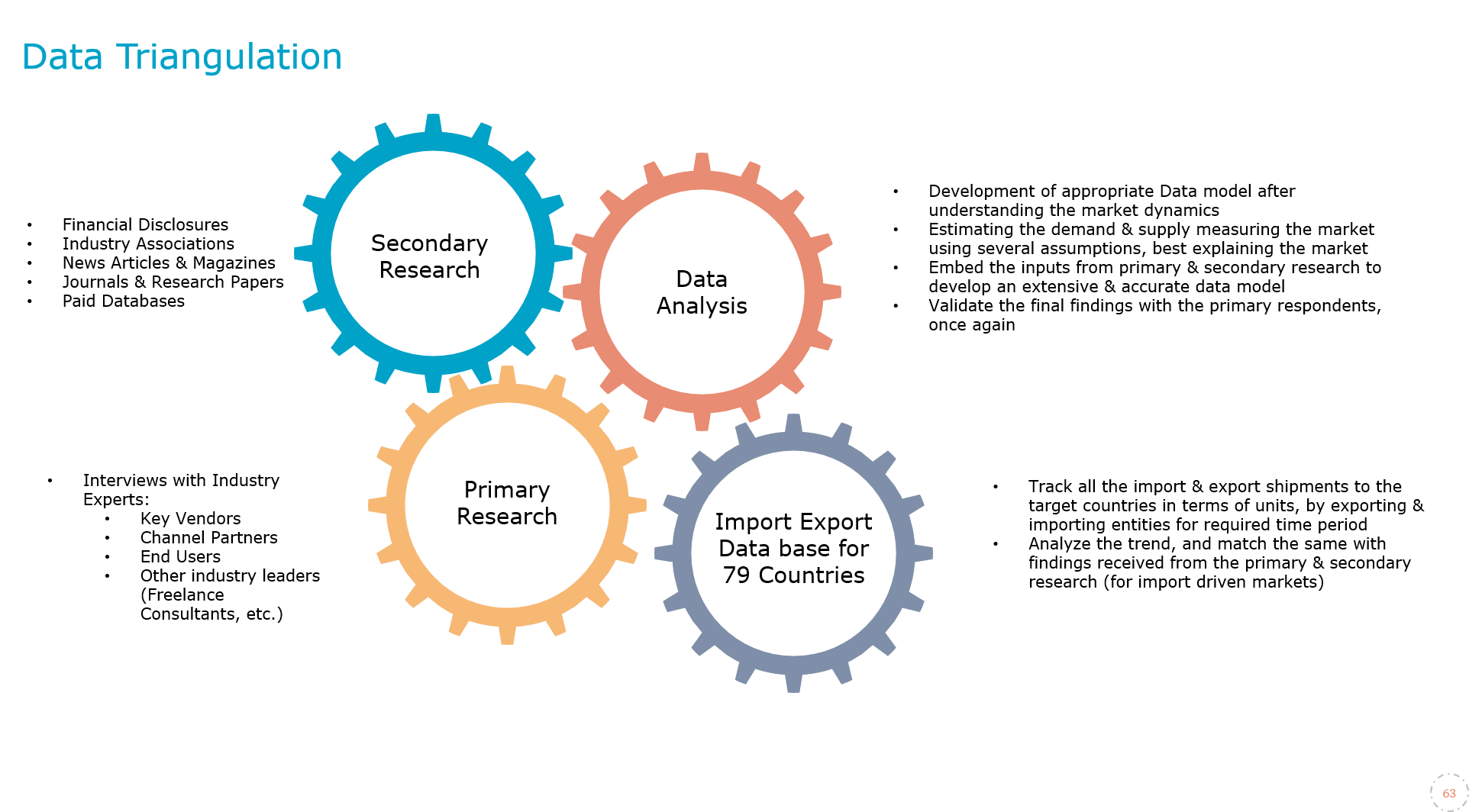
4. Data Forecast and FinalizationThe final phase involves forecasting future market trends based on the analyzed data. MarkNtel Advisors utilize predictive modeling and time series analysis to anticipate market behaviors. The insights are then compiled into comprehensive reports, featuring visual aids like charts and graphs, and include strategic recommendations to inform client decision-making

